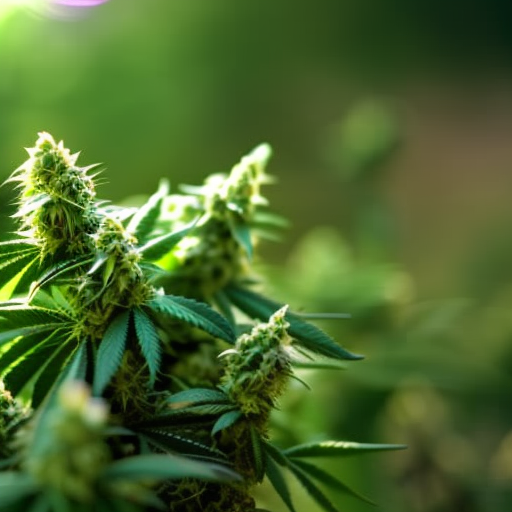
Ayo, if you tryna grow some fire cannabis inside, you gotta know the game. Indoor growin’ is where it’s at, ’cause you can control every lil’ thing – light, air, and most importantly, them nutrients. Let’s break down how to keep your plants healthy and happy so you can get that good herb.
Understanding Cannabis Nutrients
Alright, let’s talk nutrients. Your cannabis plants need a whole lotta goodies to get big and strong. We got two main categories: macronutrients and micronutrients.
Macronutrients
- Nitrogen (N): This is vital for your plants to grow leaves and stems. It helps with photosynthesis, which is like the plant’s food-making process.
- Phosphorus (P): When your plants start to flower, they need more phosphorus. It’s all about them roots and energy transfer, ya feel me?
- Potassium (K): Potassium got your back when it comes to water uptake and keeping the plant healthy against diseases.
Micronutrients
- Calcium (Ca): Helps with cell walls and growth.
- Magnesium (Mg): Key for makin’ that chlorophyll, which is essential for photosynthesis.
- Sulfur (S): Important for producing amino acids and enzymes.
- And don’t forget about Iron (Fe), Manganese (Mn), Zinc (Zn), Copper (Cu), Boron (B), Molybdenum (Mo), and Chlorine (Cl). They might be small, but they pack a punch in helping your plant grow.
Choosing the Right Nutrients
Organic vs. Synthetic Nutrients
Now, you gotta decide if you want organic or synthetic nutrients:
- Organic Nutrients: These come from nature and help keep your soil healthy. They release nutrients slowly, so you ain’t gotta worry ’bout burnin’ your plants.
- Synthetic Nutrients: These bad boys are made in a lab and give your plants a quick boost. They’re strong and can be measured with precision.
Nutrient Ratios
Every stage of your plant’s life needs different nutrient ratios. Check this:
- Vegetative Stage: You want higher nitrogen levels. A good ratio is like 3-1-2 (N-P-K).
- Flowering Stage: Boost that phosphorus and potassium. Aim for a 1-3-2 ratio.
Tips for Effective Nutrient Management
- Start with Quality Soil: The medium you choose is key. Soil holds nutrients well, while coco coir needs extra calcium and magnesium.
- pH Management: Keep that pH in check! Aim for 6.0-7.0 for soil, and 5.5-6.5 for hydroponics. Use pH meters or test kits to keep it right.
- Go Slow with Nutrients: Don’t dump all them nutrients at once. Start small, like a quarter or half of the recommended dose.
- Watch for Problems: Check your plants regularly for yellow leaves or burn. Catching problems early is key!
- Feeding Schedule: Set a routine! Many growers feed once a week and alternate with watering.
- Flush ‘Em Out: Running plain water through the soil helps clear out excess salts before harvest. This makes your buds taste better.
- Beneficial Microbes: Adding good microbes helps your plants get more nutrients. Look for products with mycorrhizal fungi.
Advanced Tips for Optimizing Nutrient Management
- Tailor to Strains: Different strains got different needs. Research what your strain likes for the best results.
- Foliar Feeding: Spray nutrients on the leaves for a quick boost. Just don’t forget about root feeding too!
- Automated Systems: If you go hydroponic, consider using an automated feeding system for consistency.
- CO2 Enrichment: Adding CO2 can help your plants grow faster. Just make sure you got good ventilation!
- Experiment with Additives: Try out different boosters like amino acids and vitamins to see what helps your plants the most.
Troubleshooting Common Nutrient Issues
Nutrient Burn
Symptoms: Leaf tips turnin’ brown. Solution: Reduce nutrient strength and flush with water.
Nutrient Lockout
Symptoms: Yellow leaves even after feedin’. Solution: Check pH levels and flush the medium.
Nutrient Deficiencies
- Nitrogen Deficiency: Lower leaves turn yellow.
- Phosphorus Deficiency: Dark leaves with purple stems.
- Potassium Deficiency: Yellow edges and brown spots on leaves.
Keep an eye on your plants, and adjust as needed to avoid these issues.
Conclusion
Now you know the deal! Effective nutrient management is a must if you wanna grow fire indoor cannabis. Understand what your plants need, keep that pH level right, and watch for any signs of problems. Use advanced techniques like foliar feeding and CO2 enrichment to take your grow game to the next level. With some love and attention, you’ll be harvestin’ some potent buds in no time!
Please leave your questions below, and I’ll holler back ASAP!


Ayo this game real dope for growin that herb indoors. Gotta keep them nutrients right or ya plants won’t shine. Appreciate the tips, fam. Keep it green!
Yo this game tight for growin that indoor herb. Gotta keep them nutrients right to get that fire bud. Peep them tips and tricks, they real helpful for makin sure ya plants stay healthy and thriving. Keep it green fam!
Yo this nutrient game real important for them plants, gotta make sure they gettin all they need. Keep them leaves green and happy, and watch em thrive. Ain’t nothin like homegrown fire, feel me?